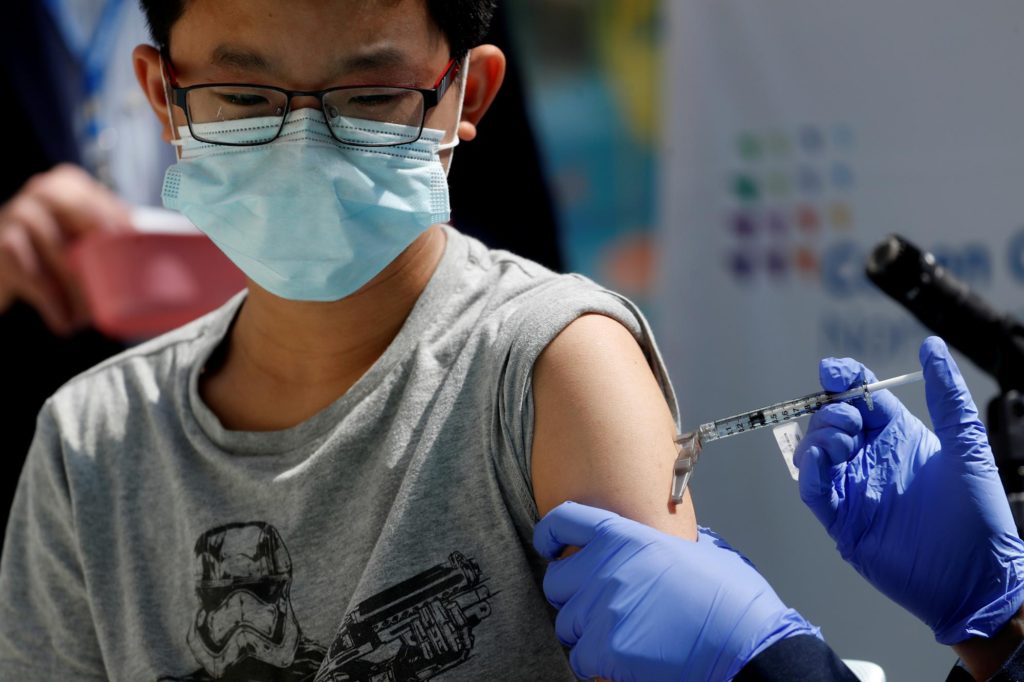[ad_1]
WASHINGTON — Last September, with COVID-19 vaccines still some three months from being made publicly available, the nation was recording about 40,000 new cases per day.
In an interview with MSNBC, Dr. Anthony Fauci called that number “unacceptably high,” especially since people were bound to travel over the forthcoming Labor Day weekend. Shortly after that, cold weather would drive people indoors, where the virus would spread much more easily than it did in the open air.
“I’d like to see it [at] 10,000 or less,” said Fauci, who has served as a top science adviser to former President Donald Trump and, currently, to President Biden.
“Hopefully less,” he added.
That milestone would not be realized for months. By late October, a third wave of the pandemic had begun, one seemingly compounded by a collective fatigue and an impatience to return to the pre-pandemic normal. January would see multiple days of more than 4,000 deaths across the country, while an average of about 250,000 new infections was being recorded daily.
Still, by late January, the pace of vaccination began to rise, a trend that would continue throughout much of late winter and early spring. Biden’s coronavirus relief package, which Congress quickly ratified, steered billions of dollars to public health efforts, and he tried to lessen the cultural rancor around masking and social distancing. But more than anything else, the availability of three coronavirus vaccines began to reverse the dispiriting trends of those dark, cold months.
Dr. Anthony Fauci. (Stefani Reynolds/Pool/Getty Images)
The result of the nationwide inoculation push has been a coast-to-coast return to near normal, one accompanied by a precipitous and encouraging drop in cases. Previous attempts by Trump to declare the pandemic over were not accompanied by similar case drops. If the virus ebbed, as it did last June, it would inevitably return as restrictions loosened.
Now such a return is less likely, simply because there is less virus circulating through the United States today than at any time since March 2020, when the pandemic was just beginning. June 1 saw only 9,358 new COVID cases recorded across the country, as Centers for Disease Control and Prevention Director Rochelle Walensky said during a Thursday briefing.
Story continues
“This is the type of news I like to deliver,” Walensky said. In late March, she had warned of “impending doom.” And while nations like India have indeed experienced a significant resurgence of the coronavirus, the unrelenting pace of vaccinations throughout March and April kept that dire prediction from being realized in the United States. (The Biden administration on Thursday announced plans to share excess doses of vaccine with nations like India that desperately need them.)
Cases aren’t just dropping, but dropping fast. The weekly average of cases for the last week of May was 31 percent smaller than that for the week before (15,623 cases versus 22,567 cases for the week ending on May 25), according to slides the CDC director presented at the briefing.
Walensky called these figures “encouraging” and “uplifting,” noting that cases had fallen by 94 percent since the darkest days of January.
As if to underscore the dynamic nature of the pandemic, infection rates for June 2 jumped back up above 10,000, with 14,354 new cases reported for that day, according to an update to the CDC dashboard. Yet the number of infections for the day before, June 1, was at the same time revised down from the figure Walensky had used, to 8,911. That lowered the seven-day average to 14,349; it has not been below 15,000 cases since March 27, 2020.
Brendan Lo, 13, receives a COVID vaccine in New Hyde Park, N.Y. (Shannon Stapleton/Reuters)
The nation first dipped under 10,000 cases several days ago, but that was because many testing sites and medical offices were closed for the Memorial Day weekend, a predictable and well-documented quirk in testing and reporting practices. The data from June 1 may be the clearest sign yet that while the pandemic is certainly not over, it appears to be coming to an end for most Americans.
Fauci had first hoped to get under 10,000 cases by last September, which he said would have prevented an autumn wave. That never happened, with the pandemic only gaining force throughout the last months of the Trump administration.
Reaching the 10,000 benchmark now may be purely symbolic, but that symbolism is not without significance. With more than half of the adult population in the United States now vaccinated, there is simply less opportunity for the virus to spread. Nor have any of the variants that have emerged in recent months shown the ability to break through the immunity afforded by vaccines to any significant degree.
There was evidence other than statistics that the pre-pandemic normal was returning swiftly (if perhaps too swiftly for some). Costco, the retail giant, recently said it will be reinstating the beloved practice of offering free food samples to some of its stores. That tradition had ended in March 2020, as the nation headed toward a season of lockdowns.
But in a nod to the fact that the post-pandemic normal won’t be entirely like the normal of pre-coronavirus days, the company said those samples would be prepared behind plastic screens.
____
Read more from Yahoo News:
[ad_2]
Source link
